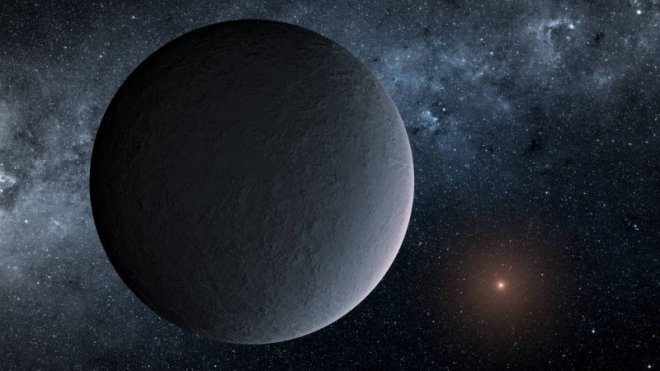
The National Aeronautics and Space Administration (NASA) has discovered a new planet with the mass of Earth, dubbed OGLE-2016-BLG-1195Lb. The astronomers claim that the planet, located at a distance of 13,000 light years away from Earth, orbits its parent star at a distance, which is equal to the distance at which Earth orbits the Sun.
The latest discovery reveals that the star of this planet is found to be very faint, which points towards the planet being too cold to be habitable.
The icy planet was found using an astronomical phenomenon called microlensing. This technique is carried out with the help of the background stars, which are used as flashlights to detect distant celestial bodies.
As per NASA statement, Yossi Shvartzvald, a NASA postdoctoral fellow based at NASA's Jet Propulsion Laboratory, Pasadena, California, and lead author of a study published in the Astrophysical Journal Letters, said: "This 'iceball' planet is the lowest-mass planet ever found through micro-lensing."
Optical Gravitational Lensing Experiment (OGLE), a ground-based survey that is managed by the University of Warsaw in Poland was used to detect the initial microlensing signals of the planet; hence it is named 'OGLE-2016-BLG-1195Lb'.
Apart from this, the Korea Microlensing Telescope Network (KMTNet), operated by the Korea Astronomy and Space Science Institute, and Spitzer, were also used by the authors of this study. KMTNet is used to track the event from Earth and space.
"When a star crosses precisely in front of a bright star in the background, the gravity of the foreground star focuses the light of the background star, making it appear brighter. A planet orbiting the foreground object may cause an additional blip in the star's brightness," a NASA statement explained in the study. The blip remained for a span of few hours in this case.
The microlensing technique can be used to find many exoplanets located far away from Earth as well as planets possessing low mass which orbit their stars at more proximity than Earth orbits the Sun.
This recent discovery has helped the astronomers to understand more about the different types of planetary systems those are present outside our solar system as well as the distribution of planets in our galaxy.
"This discovery provides more evidence that planets are not only very common but also very diverse," Yossi Shvartzvald, lead author of the study, told CNN. "They are able to form in strange environments very different from what we're accustomed to on Earth."
Similar to the two other planets spotted by NASA's Spitzer Space Telescope through microlensing, this newly discovered icy planet is also present in the flat disk of the Milky Way galaxy and not its central bulge.
"Although we only have a handful of planetary systems with well-determined distances that are this far outside our solar system, the lack of Spitzer detections in the bulge suggests that planets may be less common toward the center of our galaxy than in the disk," Geoff Bryden, astronomer at JPL and co-author of the study, said.









